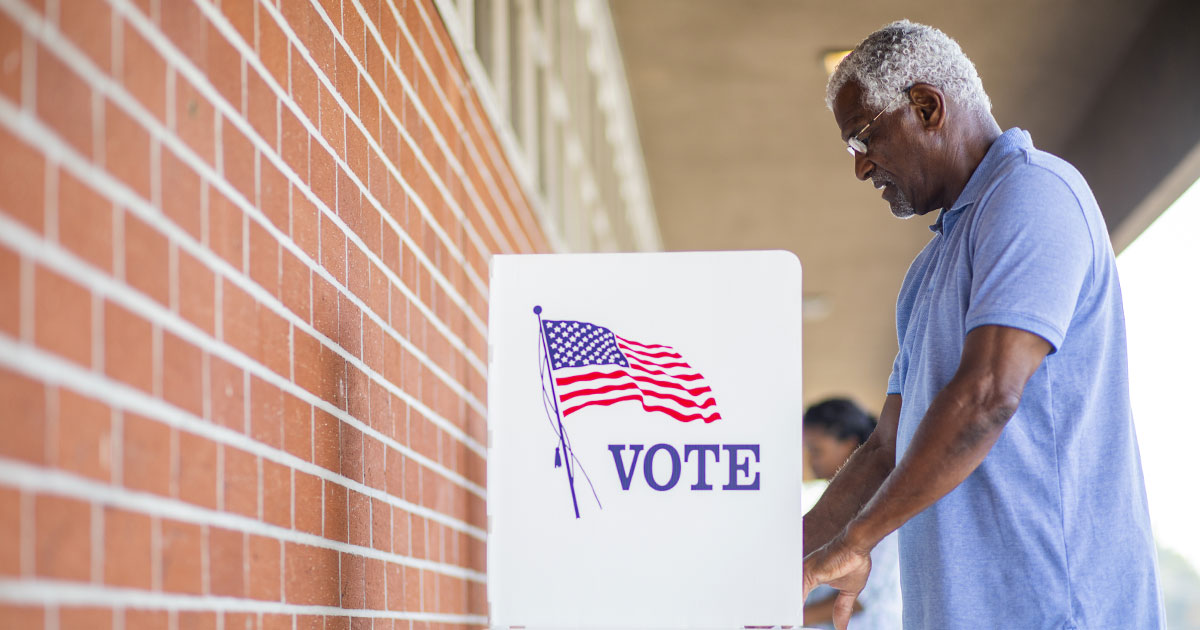

he United States Supreme Court has long recognized that local government agencies with at-large voting schemes (i.e., where voters throughout the entire jurisdiction vote for open governing body seats) rather than by-district voting (i.e., each voter only votes for the open seat in his/her district) may operate to minimize or cancel out the voting strength of minorities. Section 2 of the Federal Voting Rights Act of 1965 targets, among other things, these discriminatory at-large election schemes. By enacting the California Voting Rights Act (California Elections Code §§14027-14032), the California Legislature intended to further expand protections against vote dilution over those provided by FVRA.
This article describes how the CVRA generally disfavors at-large voting systems for school districts in California, and concludes that, in the face of litigation, school boards save considerable resources and better serve their constituents by early adoption of by-district voting.
Passed in 2001, the CVRA seeks to address at-large voting systems in local government agencies including school districts, wherever there is evidence of a history of “racially polarized voting” and/or vote dilution of members of “a protected class” (i.e. members of a racial or ethnic minority). This can be shown if the following elements are present: 1) a voting bloc of protected class members; 2) a bloc of voters outside of the protected class; and 3) candidates favored by the protected class voters that have historically not been elected. In theory, transitioning from an at-large to a by-district election system not only increases the strength of the minority vote, but also lowers the barrier for entry to run for a seat.
The switch to by-district elections has two major components that school boards may be resistant to: First, new geographic lines must be drawn that fairly divide the jurisdiction, and second, only candidates who live in a subdistrict are eligible to run for that spot on the board. The demographic survey requires some expenditures and public hearings and also may create some chaos in districts that have staggered elections. Where board election rules are set in the city charter, for example, the change may also require a citywide vote. In those jurisdictions, the school district counsel and the city attorney should meet to explore their options.
In a lawsuit alleging a CVRA violation, plaintiffs have the advantage that they will be awarded attorneys’ fees and associated expenses, including expert witness fees, if they prevail. In many situations, this can mean hundreds of thousands of dollars or more are on the line. Notably, prevailing defendants are not entitled to recover attorneys’ fees. More notably, no defendant government agency has yet to prevail in such a lawsuit. This has resulted in a small industry of plaintiff’s lawyers and civil rights organizations sending demand letters to agencies regardless of whether someone from the community brings up the concern
Recent casesThis year alone, the Santa Cruz City Schools Board of Education has been in the news because of its decision to voluntarily shift to by-district elections after the district received a demand letter from attorneys on behalf of area residents and in coordination with the California Voting Rights Project. The district is pursuing changes that would require each of the seven board members to live in — and be elected solely by the residents of — distinct geographical areas. The new rules will apply as each board seat comes up for re-election, starting in 2020.
The City of Santa Clara chose to litigate the issue last year and was found by the court to be in violation of the state voting rights law. As a result, it was ordered to adopt district elections. An appeal is ongoing, and Santa Clara is allegedly on the hook for millions of dollars in legal fees.
This February, a Statement of Decision was issued in the case of Pico Neighborhood Association v. the City of Santa Monica. After a six-week trial handled by a highly respected defense firm, the court ruled that the defendant’s at-large election system violated both the CVRA and the Equal Protection Clause of the California Constitution. The court ordered the defendant to implement district-based elections for its city council in accordance with a seven-district map. (View the ruling at bit.ly/2SIb98a.)
The safe harbor provision (the good news)Assembly Bill 350 (2016) (Elections Code §10010) amended the CVRA to provide a safe harbor provision for local government agencies with at-large election systems that receive communications demanding that the local agency transition to by-district elections. Under AB 350, in order to recover attorneys’ fees, the potential plaintiff must provide written notice to the local agency; the local agency then has 45 days from the date of receipt of the letter to adopt a resolution of intent to transition to by-district elections. If the agency then voluntarily makes the transition to by-district election under these circumstances and within a set timeline, attorneys’ fees for the plaintiff are capped at $30,000.
The matter must proceed as follows:Resolution of intent:
Once a demand from potential plaintiffs is received, the local agency has 45 days to pass a resolution of intent, stating its intent to move to a by-district system and outlining specific steps and an estimated time frame for doing so. If the agency passes a resolution of intent, no CVRA lawsuit can be filed for the following 90 days.
Before drawing maps:
The local agency must hold at least two public hearings within a 30-day period “at which the public is invited to provide input regarding the composition of the districts.”

Process of drawing maps:
The process of drawing maps is undertaken by a demographer who will have to ensure a balanced population among the districts drawn, among many other factors.
After drawing maps:
The local agency must “[p]ublish and ‘make available for release’ at least one draft map” at least seven days before the first hearing at which draft maps are considered.
If this process is followed and the local agency adopts an ordinance to transition to a by-district election system, the potential plaintiff who sent the demand letter has the right to demand attorneys’ fees up to 30 days after the ordinance is adopted. Again, fees are capped at $30,000.
On Sept. 6, 2018, Gov. Jerry Brown signed AB 2123, which added a provision allowing political subdivisions to enter into agreements with prospective plaintiffs that extend these timelines to permit a process of public engagement to occur over a slightly longer timeframe.
Current landscapeSeveral school districts have asked what other local agencies in the state are doing. While the majority (about 58 percent) of districts and cities in California continue under at-large systems, many have adopted by-district systems or are currently considering or proceeding with the transition.
Additionally, a number of CSBA’s member boards have received demand letters threatening litigation. More are expected in light of the above-described rulings. Private attorneys and nonprofits involved in sending demand letters to cities and other local agencies in recent years have signaled an intent to remain active in CVRA litigation.
It bears repeating that, as of now, no city or district has prevailed in defending its at-large voting system in a CVRA lawsuit.
Current optionsEach school district must decide for itself whether, on balance, the risk of receiving a demand letter is so high that voluntarily undertaking a conversion to by-district elections is worthwhile. Many districts have decided to adopt a “wait-and-see” approach to conversion; this is, in our view, riskier for the larger jurisdictions (which attract more attention and have more discrete minority communities within their jurisdictions that may be deprived of voting power by at-large election systems), particularly when the city or town with which the school district shares territory has received a demand.
If you wish to receive more specific advice regarding the CVRA and your district’s particular circumstances, please contact your legal representative.
Kathryn Meola is General Counsel for CSBA